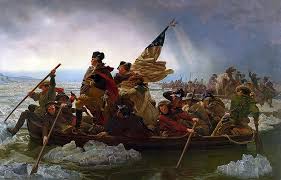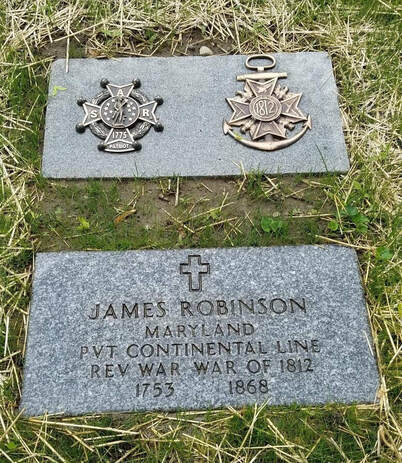
BUILD A MEMORIAL TO
The Forgotten Black Patriots of the Revolutionary War
SEE THE WEBSITE
DONATE TO THE MEMORIAL
The Forgotten Black Patriots of the Revolutionary War
SEE THE WEBSITE
DONATE TO THE MEMORIAL
|
UPDATE 11/8/20 - Grassley Floor Speech on Why This Monument Is Needed More Than Ever
|
|
UPDATE 8/9/20 - New article by Memorial organizer Maurice Barboza
They Completed the Founders’ Vision - A Monumental Achievement
- Thoughts on the Recent Statue Wars from a Memorial Organizer
They Completed the Founders’ Vision - A Monumental Achievement
- Thoughts on the Recent Statue Wars from a Memorial Organizer
|
UPDATE 6/22/20 - Senator Grassley Gives Floor Speech on Forgotten Black Patriots
|
|
|
UPDATE 2/28/20 - Governor Northam, Spearhead the Memorial to the Forgotten Black Patriots of the Revolutionary War
The organization trying to get a memorial to the black soldiers who fought in the Revolutionary War has called upon Governor Ralph Northam to lead a multistate effort to fund the project. “You could inspire Virginians and the governors and citizens of states where as many as 10,000 African American Revolutionary War soldiers and patriots once resided,” Maurice Barboza, Founder & CEO of Liberty Fund D.C. wrote the Governor on January 20, 2020. See the letter in its entirety nearby, and listen to Maurice explain more about the project in the audio clip from Eagle News.
|
| ||
|
|
UPDATE 5/31/19 – Black Revolutionary War Soldier Honored in Detroit
|

UPDATE 3/4/16 – Do you know why the U.S. flag is folded into a triangle for presentation to veterans’ relatives at funerals? It’s a reference to the tri-corner hat worn by colonial soldiers who fought in the Revolutionary War. The symbolism places the latest American soldiers to die in an unbroken line extending all the way back to the first to die in our War of Independence, including the forgotten black patriots discussed below.
During Black History Month, ATP was sent a story about a true patriot, a black American named Fred Cherry, who was a U.S. Air Force pilot held as a prisoner of war for seven years in North Vietnam. While imprisoned, Cherry endured solitary confinement and torture without once allowing himself to be used as a propaganda tool, despite having experienced segregation earlier in life. When Cherry died in February of this year, his cellmate Porter Halyburton told the Washington Post, “He was such an ardent patriot. He loved this country.”
The American Left hates patriotism and indulges in race-baiting. It concocts flawed history in an attempt to construct an artificial identity for blacks to set themselves apart on racial lines. For anyone looking for genuine sources of racial pride, true history, and Martin Luther King’s dream of an integrated America, read Fred Cherry’s story here. Fred Cherry, ATP salutes you.
UPDATE 12/18/15 - Liberty Fund D.C. asks South Carolina to honor 121 forgotten African-American patriots; campaign for D.C. memorial site continues.
UPDATE 9/16/14 - The U.S. House and Senate have approved a memorial site which is expected to be across from the Washington Monument on 14th Street between Jefferson and Independence in D.C.
KEEP UP WITH THE MEMORIAL EFFORT AND DONATE HERE
“Our National Independence: African Americans in the Revoluti onary War”
Maurice A. Barboza, Founder, Liberty Fund D.C.
www.libertyfunddc.org
Speaking Before The Alexandria Tea Party
Pat Troy’s Restaurant, July 4, 2012
Frederick Douglass asked an audience on July 5, 1852, “What have I, or those I represent, to do with your national independence?” If only he knew what scholarship now enables you to tell your families, colleagues and elected representatives.
Enslaved and free African Americans served in all of the major battles of the Revolutionary War, from Lexington and Concord to Yorktown. Most served in integrated units -- something that did not happen again until the Korean War.
Although comparatively small, the population of free blacks increased enough after the Revolution to spur community-building and spawn leaders. Leaders didn’t simply materialize in the 1950s; they are rooted in institutions dating back to 1776. The creation of churches and resilient institutions continued the fight for the principles of the Declaration of Independence.
The businesses and enterprises they undertook enabled descendants to pass on hard-won lessons of education, persuasion and frugality. The Revolutionary War ancestor of scholar Paul Robeson, a baker, bought his own freedom and supplied the army with provisions. Wealthy Philadelphia sailmaker, James Forten, then a 15 year old powder boy, was held a prisoner after his privateer was captured by the British. His granddaughter, Charlotte, was an educator and abolitionist.
Blacks had been serving in the military since the French and Indian Wars. When skirmishing commenced along the road, between Lexington and Concord, there were about 500,000 blacks among the estimated population of 2.5 million. Just over 40 percent, or 820, of Connecticut’s eligible black males served from a population of around 5,100. Rhode Island contributed about the same, while the lions share, 1,570, came from 194 communities in Massachusetts.
Around half of the black population lived in Virginia where the fear of revolts and mass escapes tempered the will to make soldiers of the enslaved. Nonetheless, at least 600 served from 82 counties. Thousands of others aided the cause in civilian capacities. Patriots from every state made conscious choices. Boston’s free black soldiers won an exemption when all blacks were barred from serving for a time after Bunker Hill.
Among the men on Lexington Green on the morning of April 19, 1775, was Prince Estabrook. Later, that day the enslaved 34 year old was the first casualty of his race. He recovered and served multiple enlistments until 1783, including at Ticonderoga.
There were others at Lexington: Peter Salem was a Framingham minutemen who received his freedom so he could enlist. Most blacks were either freed upon enlisting or at the completion of service. Some masters reneged on the promises after pocketing soldiers’ pay. Legislatures acted to stop the backsliding; courts often found for the patriots.
After years of speculation over how many served, a 2008 publication, “Forgotten Patriots,” lists over 5,000. Some authorities estimate there were over 10,000. There could be up to 8 million descendants. The first black mayor of Hartford, Connecticut, a Harvard scholar, a Raleigh firefighter, a private investigator and a retired federal judge are among them. Some proud white descendants embrace their distant ancestors and share the pride with their black cousins.
Many ancestors are known because they are described in war records as “negro,” “black,” “mulatto,” “yellow,” brown,” “man of color,” and “slave.” Others are identified by slave names like Ceasar, Pomp or Primus. Or by aspirational names like Liberty or Freedom. Census, birth and death records and the records of slave holders may shed new light on the identities of others.
Besides soldiers, sailors, and marines, thousands of blacks served in the salt and lead mines of Virginia, drove wagons, made weapons and ammunition, felled trees, built defenses, spied on the British. They were killed, captured and wounded. Many applied for pensions, married and raised large families. Some received bounty land and praise from Washington, state legislatures and officers.
Among the most compelling men, women, and children are those who saw opportunity in the era’s rhetoric of liberty and disarray. Blacks by the thousands ran away to freedom. Some fled to the British after the Royal Governor of Virginia offered freedom to any slave who stood with him. Others filed freedom petitions with courts and legislatures.
Elizabeth Freeman, whose husband was a casualty of war, won a law suit in 1781 that set her free and brought down slavery in Massachusetts. A Stafford County slave holder advertised in the Virginia Gazette of February 3, 1776, that Charles had run off the previous November by “a determined resolution to get liberty…”.
Last year, the Alexandria city council honored John Pipsico, Benjamin Whitmore, Joseph Longdon and William Lee. Prince William and Fairfax counties honored their patriots, including John Sidebottom who helped carry the wounded 18 year old James Monroe off the battlefield at Trenton. Robert Randall of Fairfax County -- wounded and hospitalized for six months -- was later captured and brought to Yorktown by the British where he escaped and reenlisted once again. Nearly 50 similar resolutions were approved in Virginia, Connecticut, Massachusetts and Rhode Island. North Carolina’s governor declared last week, “Forgotten Patriots Week.”
Your colleague, ---, observed that this history belongs to all of us. If an entirely citizen-funded National Liberty Memorial is to be built in Washington, every member of Congress who represents at least one patriot must stand up. Bipartisan legislation, S. 883, is awaiting floor action in the Senate. No action has occurred in the House on a companion bill, H.R. 2181.
At least 19 patriots are connected to this 8th congressional district and the neighboring 10th and 11th. Farther south, the 7th, represented by the House Majority Leader, can claim at least 57.
We are trying to gain ground in every moment remaining in the 112th Congress. Thank you for setting aside this moment to consider what you can do.

